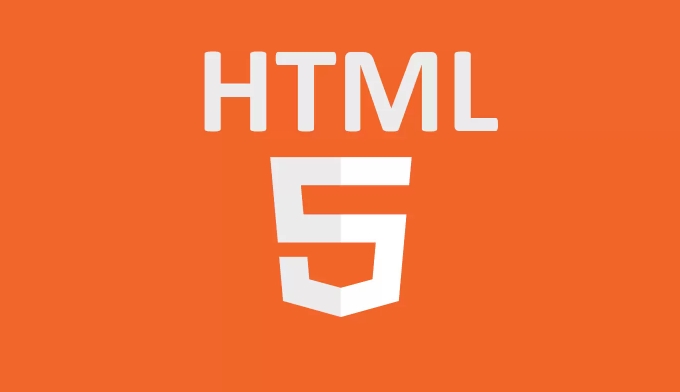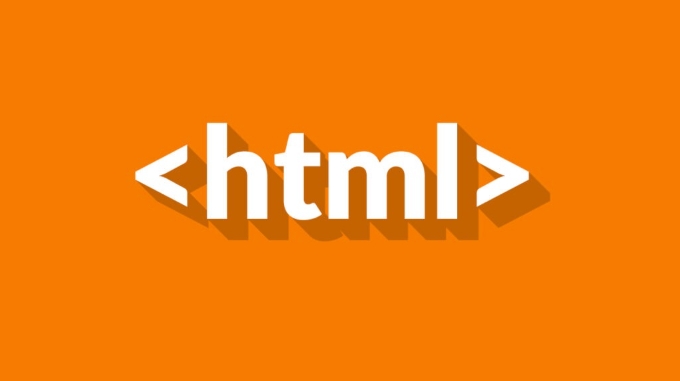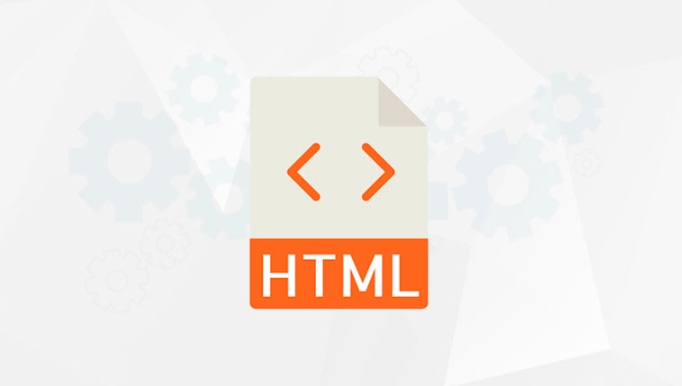How to create a favicon for your HTML5 website?
Choose a favicon size (16×16, 32×32, or 48×48 pixels) and format (.ico for broad support, .png for transparency, or .svg for scalability on high-DPI screens).Create or convert a square image (such as a logo) using tools like Photoshop, GIMP, or online services like Favicon.io or RealFaviconGenerator.net, ensuring it is properly resized and saved as favicon.ico, favicon.png, or favicon.svg.Place the favicon file in the website’s root directory or explicitly link it in the HTML
section using tags for .ico, .png, or .svg formats.Optionally, include high-resolution versions for specific devices using for iOS and for Android and Chrome.Use RealFaviconGenerator.net to streamline the process by uploading an image, previewing device compatibility, generating a complete favicon pack, and inserting the provided HTML code into your site’s section. Following these steps ensures your favicon displays correctly across all platforms and enhances your site’s professionalism and recognizability in browser tabs and bookmarks.
Creating a favicon for your HTML5 website is a simple but important step to make your site look more professional and help users identify your site in browser tabs and bookmarks. Here’s how to do it properly.

Choose the Right Size and Format
A favicon is typically a small icon, most commonly 16×16 or 32×32 pixels. The standard format is .ico, but modern browsers also support .png, .svg, and even .gif formats.
- Recommended sizes: 16×16, 32×32, and optionally 48×48 pixels.
-
Best formats:
-
.ico– Widely supported, including older browsers. -
.png– Great for transparency and modern sites. -
.svg– Scalable and sharp on high-DPI screens (supported in most modern browsers).
-
If you want maximum compatibility, use a .ico file that includes multiple sizes embedded in one file.

Create or Convert Your Image
You can create a favicon from any square image (like your logo):
- Use image editing tools like Photoshop, GIMP, or free online tools like Favicon.io, RealFaviconGenerator.net, or ConvertICO.
- Resize your image to 16×16 or 32×32 pixels.
- Save it as
favicon.ico(for broad support) orfavicon.png/favicon.svgif you prefer those formats.
For .ico files with multiple sizes:

- Use a tool like RealFaviconGenerator or an image converter that supports multi-size
.icofiles.
Add the Favicon to Your Website
Place the favicon file in your website’s root directory (e.g., /favicon.ico) — many browsers will automatically look for it there.
Alternatively, explicitly link it in the section of your HTML:
<!-- For ICO --> <link rel="icon" href="/favicon.ico" type="image/x-icon"> <!-- For PNG --> <link rel="icon" href="/favicon.png" type="image/png"> <!-- For SVG (modern browsers) --> <link rel="icon" href="/favicon.svg" type="image/svg xml">
You can also add high-resolution versions for different devices:
<!-- Apple Touch Icon --> <link rel="apple-touch-icon" href="/apple-touch-icon.png"> <!-- Android, Chrome, etc. --> <link rel="icon" sizes="192x192" href="/icon-192.png">
Optional: Use a Favicon Generator Tool
To save time and ensure compatibility across devices (including iOS, Android, and desktop browsers), use RealFaviconGenerator.net:
- Upload your image.
- Preview how it looks on different devices.
- Generate the pack (includes various sizes and HTML code).
- Download and upload the files to your site.
- Paste the generated HTML into your
.
This tool handles all the edge cases and gives you a complete solution.
Basically, just pick a clear, simple icon, save it in the right format, and link it properly in your HTML. It’s small but makes a noticeable difference.
The above is the detailed content of How to create a favicon for your HTML5 website?. For more information, please follow other related articles on the PHP Chinese website!

Hot AI Tools

Undress AI Tool
Undress images for free

Undresser.AI Undress
AI-powered app for creating realistic nude photos

AI Clothes Remover
Online AI tool for removing clothes from photos.

ArtGPT
AI image generator for creative art from text prompts.

Stock Market GPT
AI powered investment research for smarter decisions

Hot Article

Hot Tools

Notepad++7.3.1
Easy-to-use and free code editor

SublimeText3 Chinese version
Chinese version, very easy to use

Zend Studio 13.0.1
Powerful PHP integrated development environment

Dreamweaver CS6
Visual web development tools

SublimeText3 Mac version
God-level code editing software (SublimeText3)

Hot Topics
 1657
1657
 276
276
 How to add a favicon to your website with HTML5
Aug 27, 2025 am 02:35 AM
How to add a favicon to your website with HTML5
Aug 27, 2025 am 02:35 AM
To add a website favicon correctly, first prepare a 32×32 or 64×64 pixel .ico, .png or .svg format icon file and name it favicon.ico, etc., place it in the website root directory or a specified path, and then use a clear statement in the HTML tag. For example: It is recommended to support multiple formats and devices at the same time, such as adding PNG different size versions, SVG icons, and Apple touch icons. Finally, clear the cache and test whether it displays normally, to ensure that the path is correct and the file is accessible. The entire process requires attention to the file format, path and compatibility to avoid loading failure.
 What is Forest Protocol (FOREST currency)? How about it? FOREST token economic model and market prospect analysis
Sep 05, 2025 am 09:09 AM
What is Forest Protocol (FOREST currency)? How about it? FOREST token economic model and market prospect analysis
Sep 05, 2025 am 09:09 AM
Catalog ForestProtocol's birth background The innovative technology architecture of interactive tokens (Playable Tokens) CampaignOS: Turn tokens into "playable products" Launchpad and AMM: No curves, no migration, flywheels and fees: Convert usage and revenue into repurchase and destroy CampaignOS's role and value Launchpad and AMM mechanism $FOREST's token economic model Where the value of $FOREST comes from the latest price and market outlook roadmap: From template
 What is the placeholder attribute's purpose in HTML5?
Aug 31, 2025 am 06:58 AM
What is the placeholder attribute's purpose in HTML5?
Aug 31, 2025 am 06:58 AM
Theplaceholderattributeprovidesashorthintininputfieldsthatdisappearswhentypingbegins;1.Itisusedinandelementstoshowexampletextlike"Enteryouremail";2.Thehintisdisplayedonlywhenthefieldisemptyandstyledfaintlybybrowsers;3.Itdoesnotreplacetheele
 How does Content Security Policy (CSP) work with HTML5?
Aug 30, 2025 am 01:29 AM
How does Content Security Policy (CSP) work with HTML5?
Aug 30, 2025 am 01:29 AM
CSPenhancesHTML5securitybydefiningtrustedcontentsourcestopreventXSS,clickjacking,andcodeinjection.1.Itrestrictsinlinescriptsandstylesbyblockingthemunless'unsafe-inline',nonces,orhashesareused.2.Itcontrolsexternalresourcesviadirectiveslikescript-src,i
 How to use the HTML5 template tag
Aug 31, 2025 am 08:23 AM
How to use the HTML5 template tag
Aug 31, 2025 am 08:23 AM
TheHTML5tagstoresinert,reusableHTMLcontentthatcanbeclonedwithJavaScript;itremainsunrendereduntilprogrammaticallyinserted,makingitidealfordynamicallygeneratingelementslikeproductcardswithoutreloadingorhardcoding,anditsupportsadvancedfeatureslikedataat
 What is the difference between article and section in HTML5?
Aug 22, 2025 am 08:29 AM
What is the difference between article and section in HTML5?
Aug 22, 2025 am 08:29 AM
Useforself-contained,independentlydistributablecontentlikeblogpostsorcomments;2.Useforthematicgroupingsofcontentsuchaspagechaptersorrelatedcontentblocks;3.issemanticallyindependentandreusable,whileorganizescontentwithinalargercontext;4.Choosebasedonm
 How to use the HTML5 contenteditable attribute
Aug 23, 2025 am 09:55 AM
How to use the HTML5 contenteditable attribute
Aug 23, 2025 am 09:55 AM
ThecontenteditableattributemakesHTMLelementseditablebyaddingcontenteditable="true"toelementslikediv,p,orh1–h6.2.UseJavaScripttoretrievecontentviainnerHTMLforformattedtextortextContentforplaintext.3.Listenforchangesusingtheinputeventtocaptur
 How to use the HTML5 nav tag correctly
Aug 22, 2025 am 01:36 AM
How to use the HTML5 nav tag correctly
Aug 22, 2025 am 01:36 AM
Use tags to define the main navigation link blocks of the web page to improve accessibility and SEO; 2. Use only in main navigation areas such as main navigation menus, sidebar links, paging or catalogs, rather than each link; 3. Pack the links in it and recommend or organize links to enhance semantics and accessibility; 4. Avoid too many or unnecessary blocks to ensure clear structure; 5. Add aria-labels to multiple to distinguish uses; 6. Do not put non-navigation content such as copyright information, and avoid missing structured markings of link lists. Correct use can effectively improve the usability and organization of the website.





